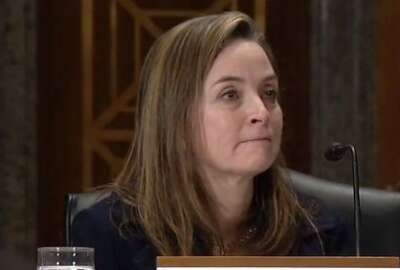
Upcoming IDEA Act deadlines task agencies with digital service overhaul
Under the IDEA Act, agency officials see a clearer path forward on making .gov websites more user-friendly.
With deadlines fast approaching for the implementation of the 21st Century Integrated Digital Experience (IDEA) Act, agency officials see a clearer path forward on making .gov websites more user-friendly and able to provide more services online to the public.
The IDEA Act, which President Donald Trump signed into law just days before the start of the 35-day partial government shutdown, requires agencies to draft a plan to broaden the use of electronic signatures by June 20.
By Dec. 20, agencies must submit their plans to Congress on how to modernize their websites. The law also mandates that agencies make all paper-based forms available in an electronic format before the end of 2020.
The Agriculture Department, with several internal restructuring efforts underway, stands out as one of the agencies taking the lead under the President’s Management Agenda to transform the way it delivers their services to farmers across the country.
USDA Chief Information Officer Gary Washington, speaking earlier this month at Adobe’s Digital Government Symposium, said his office, along with the agency’s Office of Customer Experience and the Office of Communications, have joined forces to make strides in their customer experience overhaul.
“We’re very concerned and very interested in how people see us, or want to interact with us,” Washington said.
Through its Voice of the Customer program, the USDA relies on data analytics and feedback to understand the needs of its customers, and identify ways employees can better meet those needs.
“We have analytics on who’s calling, why they’re calling, where they’re call in from [and] how we’re responding to them,” Washington said.
Under the General Services Administration’s Centers of Excellence initiative, USDA expects to reduce its inventory of data centers from 38 to two. And by the end of July, the agency expects to streamline its 30 call centers down to one. By modernizing its IT infrastructure, USDA seeks to reduce the amount of time farmers applying for a farm loan have to wait before receiving funding.
USDA has also been rolling out new features on Farmers.gov, a one-stop-shop aimed at better connecting users with the services they seek. The site’s launch followed a website consolidation at the Department of Veterans Affairs.
VA first launched Vets.gov as a landing page for veterans seeking care, but migrated that site over to an updated VA.gov in an effort to maximize web traffic.
Barbara Morton, the deputy chief of VA’s Veterans Experience Office, said the push for more online services provides a great way to reach out to a younger generation of veterans. But her office is pushing for broadening the scope of customer experience to include platforms that include phone and in-person help.
“I’m excited for the day when we have a governmentwide piece of legislation talking about customer experience, to hard wire it in everything that we do in government, even outside of technology,” Morton said.
Balancing innovation and information overkill
IDEA Act sponsors, Sen. Rob Portman (R-Ohio) and Rep. Ro Khanna (D-Calif.) received recognition earlier this month at the Service to the Citizen awards gala for their contribution to improving the customer experience in government.
Related Stories

Trump signs IDEA Act in bid to close ‘tech gap’ between government, private sector websites
Khanna, whose district includes Silicon Valley, said the federal government, despite its pioneering role in launching the internet, finds itself playing catchup with the private sector on offering a positive experience online.
“How is it that we have some of the most sophisticated websites and technology platforms with Apple and Google, and yet our government, which invented most of these things, is unable to lead the way? Of course we should lead the way,” Khanna said.
Sonny Bhagowalia, the deputy assistant commissioner of Customs and Border Protection’s information technology office, said during the Adobe conference that his office is working closely with some of these top tech companies to improve the way CBP communicates both internally and with other agencies.
“We’re looking at Silicon Valley technology and interacting with them so that we can actually get things out faster, and really have the business process drive technology, because a lot of times in our world, we try to use technology as the only answer,” Bhagowalia said. “It’s really about information. People need information to make decisions and information to provide service and information to actually do their job.”
The IDEA Act comes at a time when agency websites are receiving more traffic from mobile devices. But amid the law’s push to make .gov websites more mobile-responsive, Bhagowalia said agencies should also take care to avoid giving mobile users too much information to navigate on a small screen.
“Less is more, that should be the approach on things,” he said. “A lot of times we clutter everything in these websites. We don’t look at responsive design, and we don’t look at the stuff that really matters.”
Copyright © 2025 Federal News Network. All rights reserved. This website is not intended for users located within the European Economic Area.
Jory Heckman is a reporter at Federal News Network covering U.S. Postal Service, IRS, big data and technology issues.
Follow @jheckmanWFED




